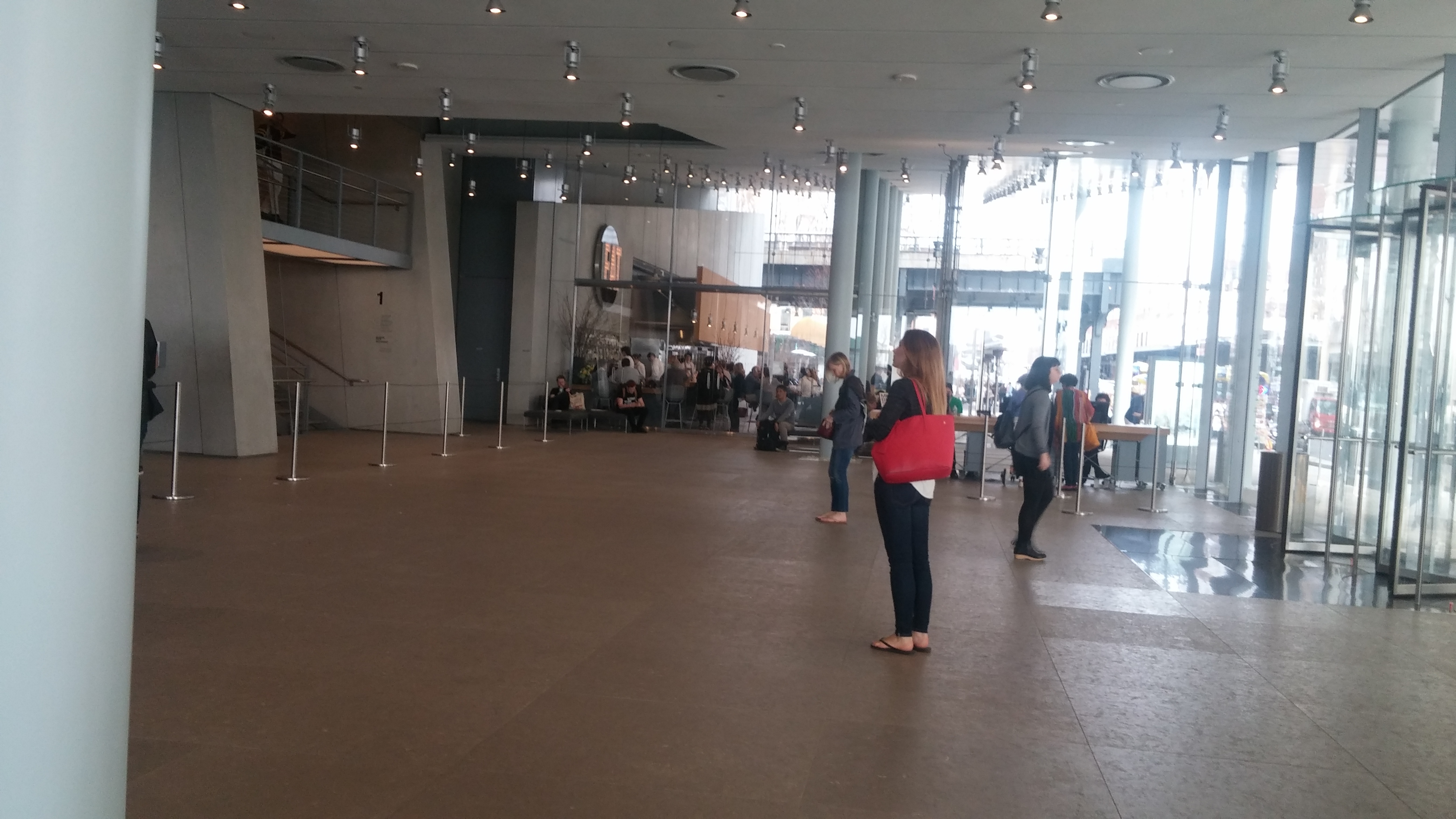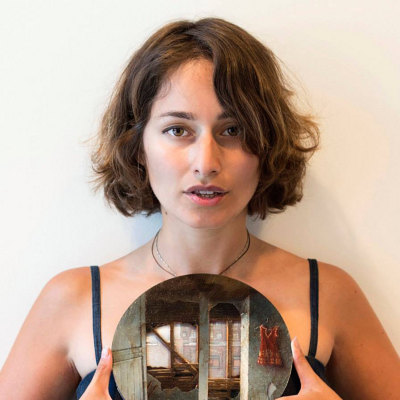One sunny winter afternoon I make plans to meet a friend at the Whitney Museum of Art. I navigate my way from the 14th Street station sans directions, guided solely by intuitive know-how from years of city living. I turn the western corner, following the cobblestone road in the direction of the Hudson River. I’m headed to 99 Gansevoort Street between Washington and West Streets. For a quick moment I peer up at a brilliant blue skyline and, almost obscuring my view of the river, I spot a white behemoth belonging to the name Whitney Museum of American Art.
I am at once reminded of the Georges Centre Pompidou Museum of Paris, which was designed by the same Italian architect, Renzo Piano. The Pompidou is, in my opinion, infinitesimally more risqué with its inside-out-factory look of exposed piping and plumbing in a European city of Renaissance design. Yet from the distance, the brand new Whitney smacks of resemblance to the Paris museum, with its familiar industrial feel, almost like it is a factory made of steel stationed at the Hudson’s riverbed. Even before I arrive onsite, I can see that in her architectural identity, the Whitney formerly of Manhattan’s Upper East Side has undergone a cosmetic surgery of sorts, leaving her barely recognizable from her former German-designed self.
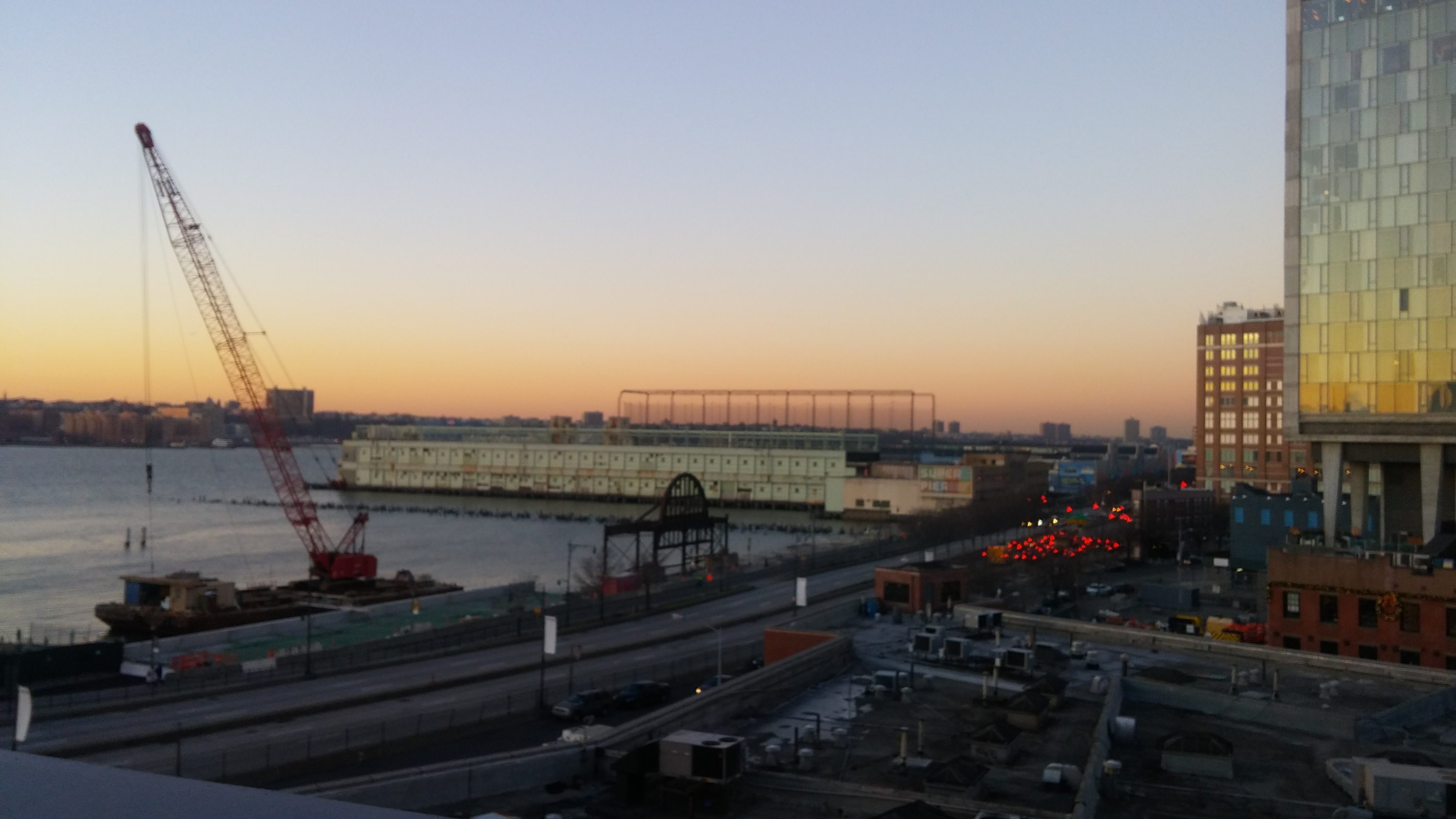
In the Photo:View of the Hudson River
THE SHIP ANALOGY
The museum’s location along the river is undeniably strategic, its placement purposeful. Tucked away at the tail end of Gansevoort Street, it is perfectly situated at the southern tip of the High Line, naturally drawing tourists to their next stop on their tourist map. An April article in the New Yorker describes the imposing edifice as ‘looming like a mothership,’ as it commandeers its post like a monstrous yacht docked obediently in harbor. Through my research, I’ve noticed that the nautical theme is a recurring one among architecture and museum critics, and the analogy is on point. One could think of the Whitney as itself a traveling exhibit. In fact, the $422-million-dollar glass and steel structure in the Meatpacking District is double in size from the previous one and is the museum’s fourth home since opening in 1931.
A PEEK INSIDE
The museum’s interior is no less boastful than its exterior, its atrium grand, almost limitless like the art it showcases. Enter the lobby and it is abuzz with gleeful activity, some visitors moseying around the gratis satellite gallery, others waiting in line for tickets.
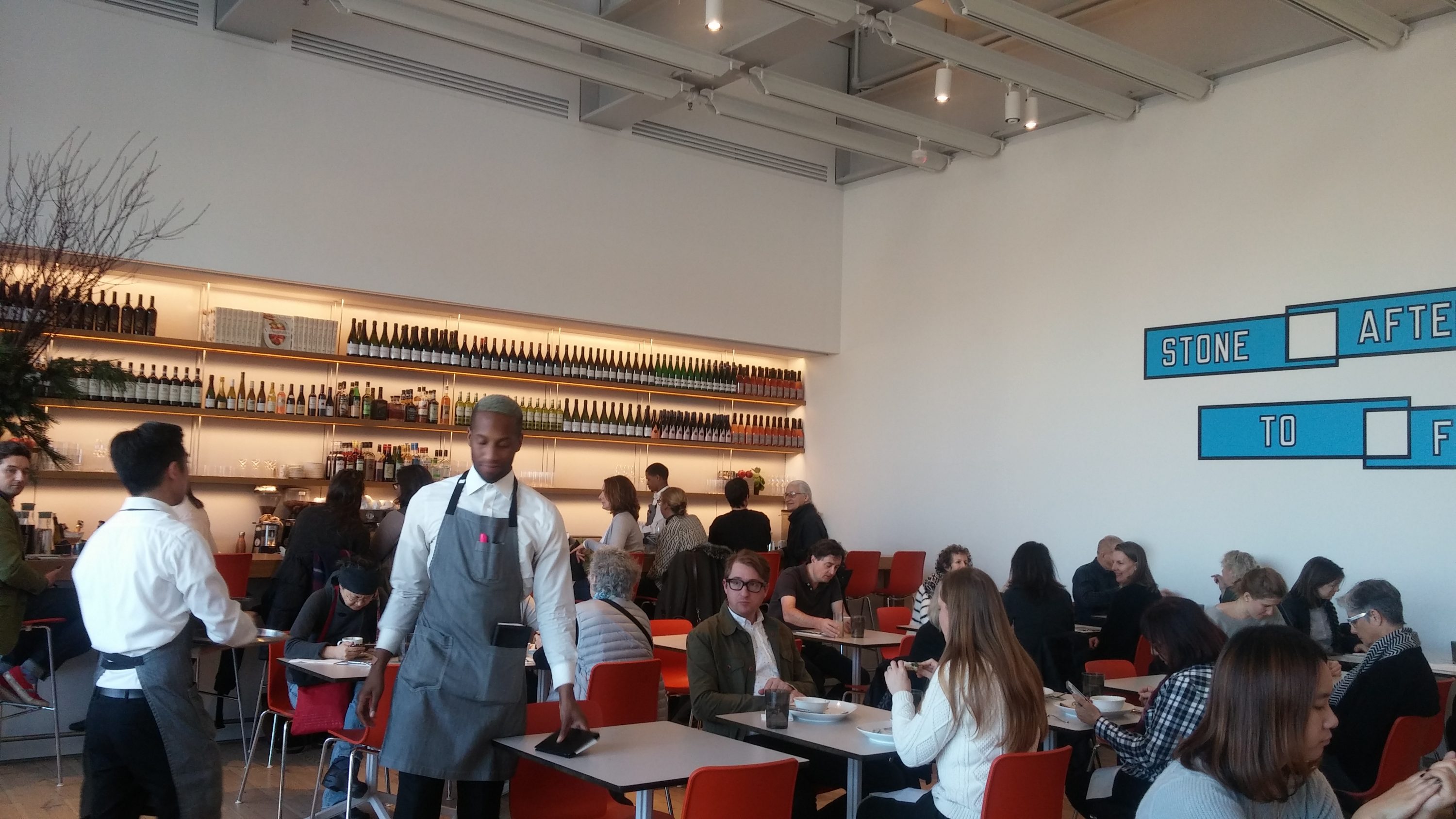
In the Photo:Museum cafe
Upstairs, floor-to-ceiling windows admit bands of sunlight into a dizzying maze of endless corridors of artwork. Immaculate white walls and blank spaces are decorated with Archibald Motley’s paintings, a visiting Frank Stella exhibit, among other permanent collections of modern American art. On the seventh floor a retro-chic, sunlit (and crowded!) cafe beckons visitors to wax philosophic midday whilst sipping a seven dollar cappuccino or delectably dining on a ten dollar toast.
Not surprisingly, it is not the Whitney’s interior decor that has stirred a controversy in the Meatpacking District. Instead, it is its very deliberate architectural boldness in an otherwise traditional neighborhood that has prompted a frenzied response from locals. One can think of the Whitney as being engaged in an unfinished dialogue with its neighbors, a perpetual conversation, even a trying courtship. It towers over neighboring buildings, low-rise apartments, and the single-story upscale boutiques which dot the neighborhood. Its exterior is bold, one could argue arrogant, commanding a unique presence in a quiet corner of Manhattan known for its century-old, dwindling meatpacking industry. The Meatpacking District is broadly bound by West 14th Street to the north, Gansevoort Street to the south, Ninth Avenue to the east and Washington Street to the west. And, while gentrification may be a hackneyed term for the neighborhood, it is nonetheless accurate.
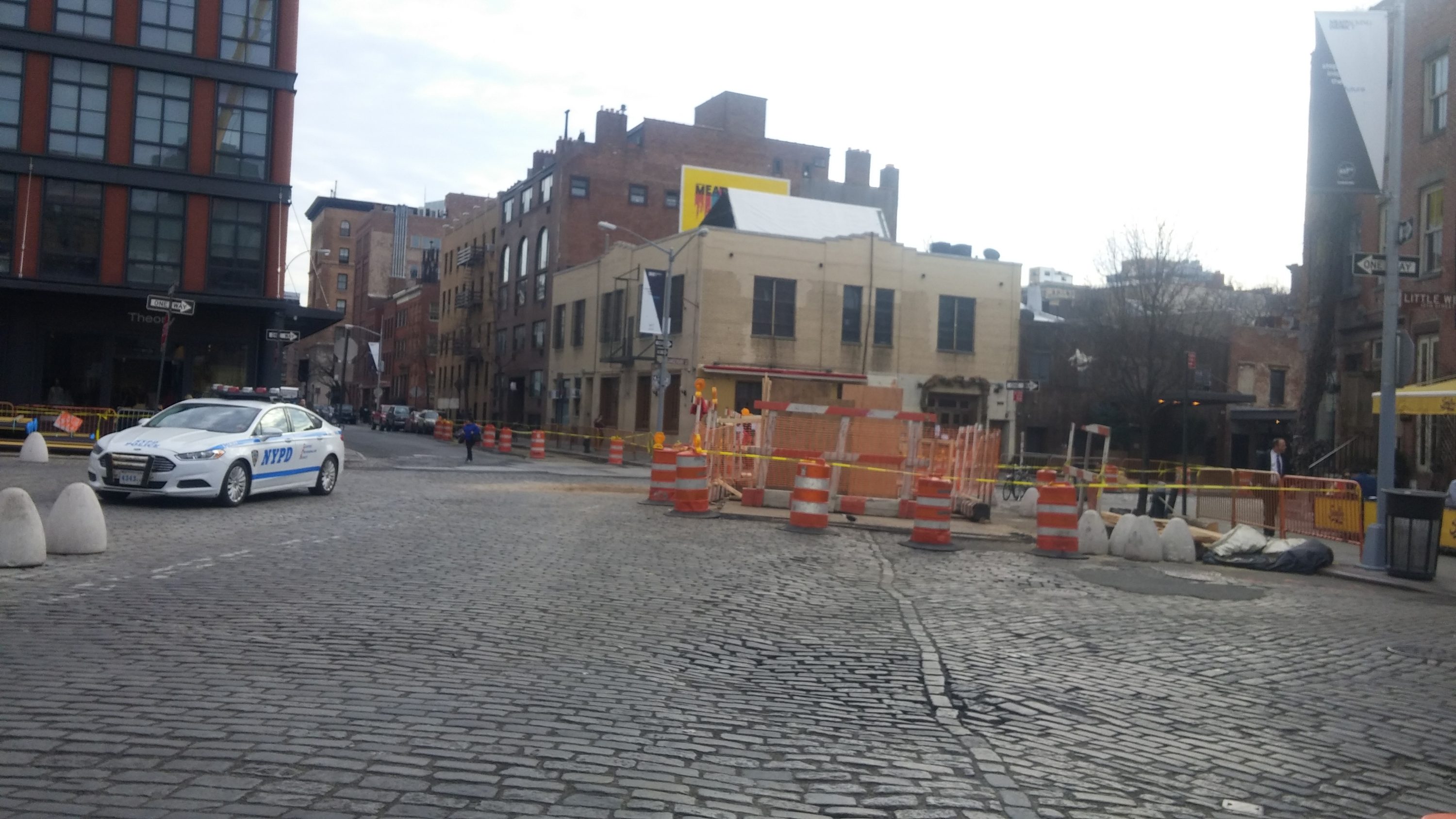
In the Photo:Construction in Meatpacking
If a modern cultural institution like the Whitney is a source of misery to Meatpacking residents, we all know that misery loves company, and nearby cobblestone streets are decked with construction vehicles, trucks, safety cones and yellow tape. The Whitney’s move to the area surely contributes to begrudged rent hikes, disliked by longtime residents (and new renters!). But—and I know it’s a big but—its move may help define downtown Manhattan as a cultural hub. And the area’s recent construction boom has the Whitney to thank.
WHAT THE WHITNEY MEANS FOR NYC—AND OTHER CITIES
However ‘unmodern’ the neighborhood might be, it was primed to receive the Whitney, as a downtown art scene was years in the making. More than simply an addition to an evolving neighborhood, the Whitney’s downtown move holds broader meaning for New York City, and really for any city in the world. Just as other black sheep, like the Georges Centre Pompidou and the modern triangular addition to the Louvre, have offset contentious debates among locals, pitting conservatives or traditionalists against “modernists,” so has the Whitney.
The key point is that stirring controversy is not a negative per se. An outlier adds flair to a neighborhood, often attracting new businesses while admittedly stymieing others. In the case of New York City, the Economic Development Corporation (EDC) holds dear the partnership between the City and the Whitney Museum, as it aims to “keep the Gansevoort Meat Market—a celebrated local business—in the neighborhood for the next 20 years.”
Cities develop intentionally or otherwise, doing away with the old to make way for the new. This may be difficult for the old generation to accept, for longtime residents, for traditionalists, for museum critics, for the highly opinionated. The good news is, invigoration is the stuff of life. Newness may be the surest guarantee of economic endurance. After all, a neighborhood’s identity is an iterative process, is it not?


